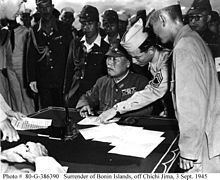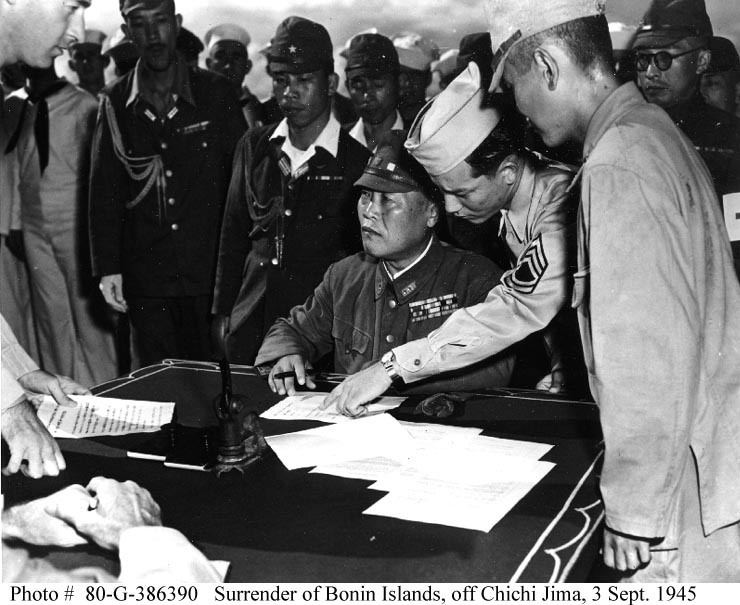Years of service 1903-1945 | Name Yoshio Tachibana Rank Lieutenant general | |
 | ||
Commands held 1st Independent Mixed Brigade109th Infantry Division Education | ||
Smk yoshio tachibana
Yoshio Tachibana (立花 芳夫, Tachibana Yoshio, 24 February 1890 – 24 September 1947) was a lieutenant general of the Japanese Imperial Army. He was commander of the Japanese troops in Chichijima, Ogasawara Islands, and was later tried and executed for the Chichijima incident, a war crime involving torture, extrajudicial execution and cannibalism of American prisoners of war.
Contents

Early life and education
Tachibana was a native of Ehime Prefecture. After graduating from a private school, he attended the Imperial Japanese Army Academy and graduated in 1913, as the 25th in his class. He had a relatively undistinguished early career as an officer. During the mid-1930s he was assigned to the Manchukuo Imperial Army as a liaison officer. In 1942, he was assigned to the staff of the Hiroshima regional defense command, and promoted to major general in March 1943. In May 1944, he became commander of the IJA 1st Independent Combined Brigade. He was further promoted to lieutenant general on March 23, 1945, and given command of the IJA 109th Division, which was tasked with the defense of the Bonin Islands against invasion by American forces in the preliminary preparations to Operation Downfall.
Career
By mid-1945, due to the Allied naval blockade, Japanese troops on Chichijima had run low on supplies, and Tachibana's senior staff turned to cannibalism. However, it should be noted that while daily ration of rice at Chichijima had been reduced from 400g per person a day to 240g, the troops were in no risk of starvation. The true purpose of cannibalism was for increasing the troop morale as well as terrorizing the prisoners. In August 1944 and February/March 1945 in what came to be known later as the “Ogasawara Incident”, Tachibana, known to his staff as a sadistic, alcoholic commander, issued an order that all American prisoners of war (downed aviators) be killed. George H. W. Bush was also shot down in the area, but closely managed to evade capture and being consumed.
Two prisoners were beheaded in a public ceremony and per an account in Time Magazine, their livers were immediately cut from their bodies and served as sukiyaki . It was not disputed that eight prisoners of war were executed, and some of the bodies were butchered by the division’s medical orderlies and portions were eaten by the senior staff of the Japanese garrison.
At the end of the war, Tachibana and his staff were arrested by the American occupation authorities and were deported to Guam, where they stood trial for war crimes in connection with the Ogasawara Incident in August 1946. However, as cannibalism was not covered under international law at the time, Tachibana was charged with "prevention of honorable burial" in addition to his execution of prisoners, and along with four other defendants, was sentenced to death by hanging.
